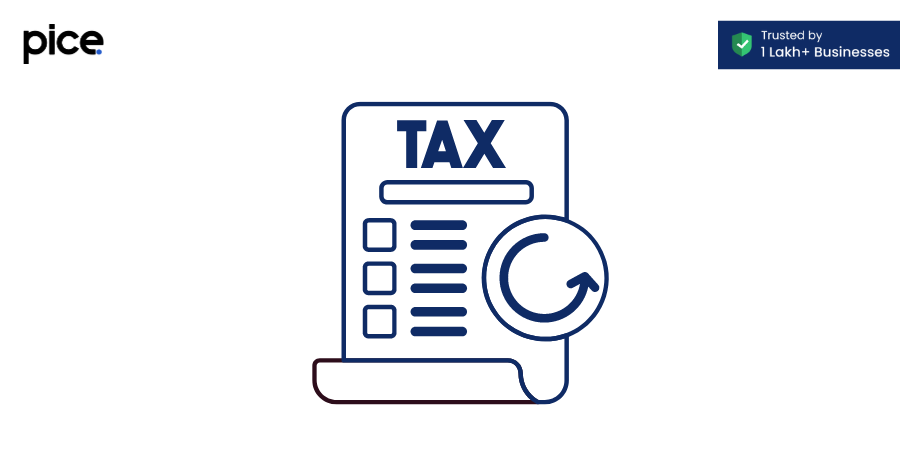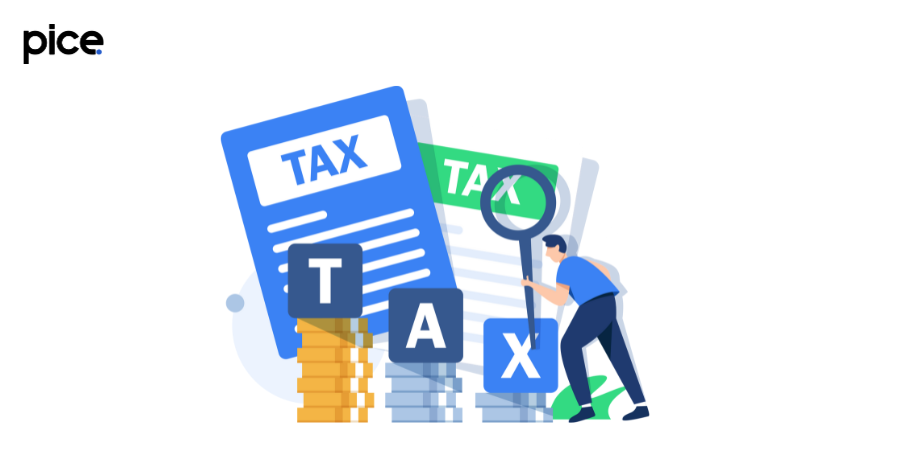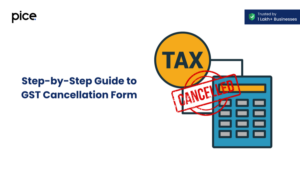What Causes the Mismatch Between GSTR 2A and 3B in Tax Returns?
- 20 Sep 24
- 15 mins

What Causes the Mismatch Between GSTR 2A and 3B in Tax Returns?
- Central Goods & Services Tax Rules 88D on Input Tax Credit
- Delay in Claiming ITC as Prescribed within Time Limit under Section 16(4)
- Strategies to Ensure Timely ITC Claims
- IGST Instead of CGST/SGST in GSTR-2A
- Input Tax Credit Excess Claimed
- Impact of Excessive ITC Claims
- Chartered Accountant Certificate Validity in Case of Mismatching as per GSTR-2A and GSTR-3B
Key Takeaways
- Regular Reconciliation: Regularly reconcile GSTR-2A with GSTR-3B to avoid ITC mismatches and ensure accurate claims.
- Timely Filing: Ensure timely and accurate filing of GST returns by both suppliers and recipients to prevent discrepancies.
- Use of Technology: Implement automated GST software for data entry and reconciliation to minimize human errors.
- Professional Assistance: Seek help from Chartered Accountants to validate ITC claims and resolve significant mismatches.
- Compliance: Adhere to GST regulations to avoid interest, penalties, and potential blocking of the electronic credit ledger.
GST mismatch as per GSTR-2A and GSTR-3B is a common issue that businesses face. GST mismatch occurs when there are discrepancies between the details reported in GSTR-2A and GSTR-3B. GSTR-2A is an auto-generated return that reflects the details of all inward supplies (purchases) made by a business based on the data filed by the suppliers in their GSTR-1.
On the other hand, businesses must submit the self-declared summary return GSTR-3B each month, which includes information about outward supplies (sales), ITC claims, and net tax due.
These mismatches can arise due to various reasons, such as non-uploading, delay, or erroneous filing of returns by suppliers, misclassification of transactions, data entry errors, or overlooking necessary adjustments.
Such discrepancies can complicate ITC claims, lead to compliance risks, and attract scrutiny from GST authorities. Regular reconciliation and accurate reporting are essential to managing and resolving these mismatches effectively.

Central Goods & Services Tax Rules 88D on Input Tax Credit
Non-uploading / Delay / Erroneous Filing of Returns by the Supplier
One significant cause of mismatches between GSTR-2A and GSTR-3B is when suppliers fail to upload their returns, delay filing, or file them incorrectly. This results in discrepancies in the data available to the recipient, impacting their ability to claim Input Tax Credit (ITC) accurately.
Impact on ITC
Non-uploading or Delay:
- When suppliers do not upload their invoices on time or delay filing their GSTR-1 returns, the recipient’s GSTR-2A will not reflect these transactions. This leads to the unavailability of invoices in GSTR-2A, which complicates the ITC claims process. Without the correct data in GSTR-2A, recipients cannot verify and claim ITC accurately in their GSTR-3B returns.
Erroneous Filing:
- Incorrect invoice details filed by suppliers, such as wrong GSTIN, incorrect invoice numbers, or inaccurate amounts, lead to mismatches between GSTR-2A and GSTR-3B. These discrepancies can make it difficult for the recipient to claim ITC, as the data in GSTR-2A does not match the actual transactions.
Examples of Common Issues
Suppliers Forgetting to Upload Invoices:
- A common issue is when suppliers forget to upload invoices or transactions in their GSTR-1 returns. This results in incomplete data in the recipient’s GSTR-2A, making it impossible for the recipient to claim ITC on those transactions. For example, if a supplier fails to upload an invoice for a significant purchase, the recipient cannot claim ITC for that purchase, leading to discrepancies and potential financial strain.
Incorrect Invoice Details Filed by Suppliers:
- Errors in invoice details are another frequent problem. Suppliers might enter incorrect GSTIN, wrong invoice numbers, or inaccurate amounts in their GSTR-1 returns. These mistakes result in mismatched data in GSTR-2A and GSTR-3B. For instance, if a supplier enters the wrong GSTIN for a transaction, the invoice will not appear in the correct recipient’s GSTR-2A, preventing the recipient from claiming ITC on that transaction.
Delays in Filing GSTR-1 Due to Technical Glitches:
- Technical issues with the GST portal or delays in data entry by suppliers can lead to late filings. When suppliers file their GSTR-1 returns late, the corresponding data does not appear in the recipient’s GSTR-2A on time. This delay can cause the recipient to miss the ITC claim for that period, leading to cash flow issues and the need for subsequent corrections. For example, if a supplier experiences a technical glitch and files their GSTR-1 return late, the recipient will not see those invoices in their GSTR-2A until the next filing cycle, delaying their ITC claim.
Examples:
- Suppliers forgetting to upload invoices.
- Incorrect invoice details filed by suppliers.
- Delays in filing GSTR-1 due to technical glitches.
Delay in Claiming ITC as Prescribed within Time Limit under Section 16(4)
Understanding Section 16(4) of the CGST Act
Section 16(4) of the Central Goods and Services Tax (CGST) Act specifies the time limit within which Input Tax Credit (ITC) must be claimed. According to this section, ITC must be claimed by the earlier of the following two dates:
- The due date for filing the return for the month of September following the end of the financial year to which the invoice or debit note pertains.
- The date of filing of the relevant annual return.
Example: If an invoice is issued in February 2023, the ITC for this invoice must be claimed by the earlier of:
- The due date for the September 2023 return, which is generally October 20, 2023.
- The date of filing of the annual return for the financial year 2022–23, which is usually December 31, 2023.
Importance of Timely ITC Claims
Accurate Financial Records and Compliance
Maintaining Financial Accuracy:
- Claiming ITC within the prescribed time frame ensures that financial records reflect the accurate amount of tax credit available to the business. This accuracy is crucial for financial planning, budgeting, and reporting purposes.
Ensuring Compliance:
- Timely ITC claims are essential for compliance with GST laws. Adhering to the deadlines helps businesses avoid scrutiny from tax authorities and reduces the risk of audits. Compliance with Section 16(4) demonstrates that the business is following the regulations, which can enhance its reputation and credibility.
Financial Implications
Avoiding Financial Losses:
- ITC is a mechanism that allows businesses to reduce their GST liability by claiming credit for the taxes paid on inputs. Delays in claiming ITC can result in businesses losing their entitlement to this credit, leading to higher out-of-pocket tax expenses.
Preventing Penalties:
- Delayed ITC claims can attract interest and penalties. GST authorities may impose interest on the delayed period and levy penalties for non-compliance, which can further increase the financial burden on the business.
Consequences of ITC Delay

Loss of ITC Entitlement
Permanent Loss of Credit:
- If ITC is not claimed within the time limits specified in Section 16(4), businesses permanently lose their right to claim this credit. This loss means that the tax paid on inputs cannot be offset against the tax liability on outputs, leading to increased costs.
Impact on Cash Flow:
- The inability to claim ITC timely affects the business’s cash flow. Without the credit, businesses need to use more of their own funds to meet their GST liability, impacting their liquidity and financial stability.
Increased Tax Liability and Potential Interest or Penalties
Higher Tax Payments:
- Without ITC, the business's overall tax liability increases. This increase requires the business to allocate more funds to pay taxes, which could have been utilized for other operational needs.
Interest and Penalties:
- GST authorities may impose interest on the amount of ITC claimed late. The interest is calculated from the due date of the claim until the actual date of the claim. Additionally, penalties for non-compliance with the provisions of the CGST Act can be substantial, adding to the financial strain on the business.
Strategies to Ensure Timely ITC Claims
1. Regular Reconciliation:
- Conduct monthly reconciliations between purchase records and GSTR-2A to ensure that all eligible ITC is claimed within the prescribed time limits. Automated reconciliation tools can simplify this process and reduce the risk of errors.
2. Efficient Record Keeping:
- Maintain organized and accurate records of all invoices and debit notes. Proper documentation is essential for timely ITC claims and can help substantiate claims during audits.
3. Timely Filing of Returns:
- Ensure that GST returns (GSTR-1, GSTR-3B, and GSTR-9) are filed on time. Timely filing prevents delays in ITC claims and reduces the risk of penalties.
4. Use of Technology:
- Implement GST software solutions that automate data entry, reconciliation, and filing processes. These tools can help businesses keep track of ITC claims and ensure compliance with GST laws.
5. Staff Training and Awareness:
- Conduct regular training sessions for accounting and finance teams to ensure they are aware of the ITC claim deadlines and the importance of timely claims. Educated staff can better manage the ITC process and avoid costly delays.
IGST Instead of CGST/SGST in GSTR-2A
One common mistake businesses make is recording Integrated GST (IGST) instead of Central GST (CGST) and State GST (SGST) in their GSTR-2A due to data entry errors or misunderstandings of tax applicability. This can lead to significant issues in GST compliance and ITC claims.
Common Mistakes
1. Incorrect Classification of Transactions (Inter-State vs. Intra-State):
Misunderstanding whether a transaction is inter-state or intra-state can lead to incorrect tax classification.
- Inter-State Supply: Transactions involving the movement of goods or services between two different states should be subject to IGST.
- Intra-State Supply: Transactions involving the movement of goods or services within the same state, which should be subject to both CGST and SGST.
Example: A business might incorrectly classify an intra-state supply as inter-state, resulting in the recording of IGST instead of CGST/SGST. This mistake can happen due to a lack of understanding of the transaction type or simply due to oversight.
2. Data Entry Errors in the GST Portal:
Manual data entry errors are another common cause of incorrect tax classification.
- Typographical Errors: Mistakes such as entering the wrong tax type or tax amounts can lead to discrepancies.
- Misinterpretation of Data Fields: Confusion about which fields to fill out or how to categorize certain transactions can result in errors. For instance, enter the total tax amount under IGST instead of splitting it correctly between CGST and SGST.
Impact
Discrepancies Between GSTR-2A and GSTR-3B:
Recording IGST instead of CGST/SGST leads to discrepancies between GSTR-2A (auto-generated return) and GSTR-3B (self-declared summary return). This affects the accuracy of ITC claims and can cause significant compliance issues.
Example: If a business incorrectly records IGST in their GSTR-2A, while the correct tax should be CGST and SGST, the GSTR-3B return will not match the GSTR-2A details, leading to reconciliation issues and potential disallowance of ITC claims.
Compliance Risks and Potential Audits:
Incorrect tax classification can attract scrutiny from GST authorities, leading to audits and compliance checks. Businesses may face penalties and interest charges for incorrect ITC claims.
Example: Persistent discrepancies between GSTR-2A and GSTR-3B due to incorrect tax classification can prompt GST authorities to audit the business's records, increasing the risk of penalties and additional tax liabilities.
Input Tax Credit Excess Claimed

Excessive claims of input tax credit (ITC) can occur due to various reasons, such as miscalculations, data entry errors, or deliberate attempts to reduce tax liability. This can lead to serious compliance issues and financial implications. Understanding the reasons behind these excess claims and implementing corrective measures is crucial for maintaining compliance and avoiding penalties.
Reasons for Excess Claims
Misinterpretation of Tax Laws:
- Misinterpretation of GST provisions often leads to incorrect ITC claims. Businesses might misread the eligibility criteria for claiming ITC, resulting in excess claims.
- For instance, ITC can only be claimed on goods and services used for business purposes. However, some businesses mistakenly claim ITC on exempt or nil-rated supplies, which are not eligible for credit.
Complexity of Tax Laws:
- The complexity and frequent updates to GST laws can cause confusion, leading to unintentional excess claims. Businesses need to stay updated with the latest amendments to avoid such errors.
Impact:
- Misinterpretation of tax laws can lead to significant discrepancies in ITC claims, attracting scrutiny and potential audits by GST authorities.
Data Entry Errors:
Typographical Errors:
- Manual data entry errors, such as typing mistakes, can result in excessive ITC claims. For example, entering the wrong invoice amount or tax amount can lead to claiming more ITC than is eligible.
- Such errors are common when businesses manually input large volumes of data into their GST returns.
Incorrect Invoice Details:
- Errors in recording invoice details, such as incorrect GSTIN, invoice number, or tax rate, can lead to excess ITC claims. These discrepancies often occur due to oversight or lack of proper verification processes.
Impact:
- Data entry errors not only lead to excessive ITC claims but also complicate the reconciliation process between GSTR-2A and GSTR-3B. Identifying and correcting these errors can be time-consuming and resource-intensive.
Overlooking Adjustments:
Failure to Adjust for Returns and Discounts:
- Businesses may overlook necessary adjustments for returns, discounts, or credit notes. Failing to adjust ITC claims for these factors can result in claiming more credit than actually eligible.
- For example, if goods are returned to the supplier, the ITC claimed on those goods needs to be reversed. However, if this adjustment is overlooked, it leads to an excess ITC claim.
Impact:
- Overlooking necessary adjustments can significantly inflate ITC claims, attracting penalties and interest from GST authorities. Regular audits and reconciliation can help identify and correct these discrepancies.
Impact of Excessive ITC Claims
Excessive ITC claims can have serious repercussions:
- Penalties and Interest:
- Excessive ITC claims can attract penalties and interest from the GST authorities. The penalties can be substantial, adding to the financial burden on the business.
- Regular Reconciliation and Audits:
- Regular reconciliations and audits are necessary to prevent such discrepancies. These processes help in identifying and correcting errors, ensuring compliance with GST regulations.
- Compliance Risks:
- Incorrect ITC claims can lead to compliance risks, including potential audits and legal actions by tax authorities. Ensuring accurate ITC claims is crucial for maintaining good standing with tax authorities.
Chartered Accountant Certificate Validity in Case of Mismatching as per GSTR-2A and GSTR-3B
A Chartered Accountant (CA) certificate can be essential in resolving discrepancies between GSTR-2A and GSTR-3B. This certification validates the correctness of Input Tax Credit (ITC) claims and aids in the reconciliation process, ensuring compliance with GST regulations.
Role of CAs
Ensure Accuracy in GST Filings:
- Chartered Accountants play a crucial role in ensuring the accuracy of GST filings. They meticulously review the details of outward supplies, inward supplies, and ITC claims to ensure they are correctly reported in the GST returns.
- They verify the information provided in FORM GSTR-1 and GSTR-2A to ensure there are no discrepancies. This helps in maintaining the accuracy of the electronic credit ledger and avoiding issues related to excess input tax credit claims.
Provide Certification for Significant Mismatches:
- When there are significant mismatches between GSTR-2A and GSTR-3B, a CA certificate is often required to validate the ITC claims. This certification acts as a testament to the accuracy of the claims and provides assurance to tax authorities.
- Chartered Accountants ensure that the ITC claimed in respect of specific transactions is correct and justified. They check for genuine errors, clerical errors, and human errors that might have led to mismatched input tax credit.
When Required
During Audits:
- A CA certificate becomes crucial during GST audits. Auditors often rely on these certificates to verify the accuracy of ITC claims and ensure that the taxpayer has complied with all GST provisions.
- Audits can uncover discrepancies between the details in FORM GSTR-1 and GSTR-3B. A CA certificate helps in reconciling these mismatches and provides a clear explanation for any discrepancies.
When Substantial Discrepancies are identified,
- Significant mismatches between GSTR-2A and GSTR-3B necessitate a thorough review by a Chartered Accountant. The CA’s certification helps in resolving these mismatches by verifying the correct details of the outward supplies and ITC claims.
- For instance, if there is a substantial difference in the credit of input tax claimed under different heads (CGST, SGST, and IGST), a CA certificate can help clarify the situation and ensure the correctness of the claims.
Conclusion
Managing mismatches between GSTR-2A and GSTR-3B is crucial for compliance and financial health. Regular reconciliation, timely filing, and accurate data entry are essential practices. Understanding GST laws and implementing robust processes can prevent errors and ensure smooth operations.
💡Learn more about how our Pice can help you make all your important business payments, like supplier and vendor payments, rent, GST, & utility, from one single dashboard with your credit card. Request a demo now.
 By
By 


















